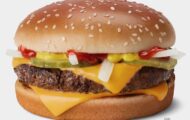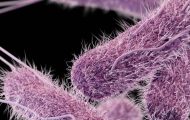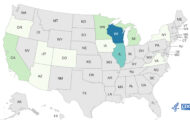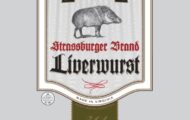The Fourth of July is next week; many people celebrate with cookouts and barbecues. And the USDA wants you to stay safe and serve safe food. They’ve put out a video, infographics, fact sheets, and podcasts at FSIS’ “Grill it Safe” webpage. View the video for safe grilling at YouTube.
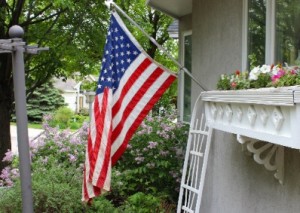
Be sure to follow the food safety rules of: Clean, Separate, Cook, and Chill whenever you prepare food. USDA’s Under Secretary for Food Safety Elisabeth Hagen said, “We want to provide families with important information that will help reduce the risk of foodborne illness during their Fourth of July celebrations. Small children and the elderly are among the most vulnerable to foodborne illness, and this information is essential in protecting loved ones at family barbecues and picnics.”
Clean
Bring cleaning items with you when you cook out. Be sure that you and your guests wash your hands before preparing, serving, handling food, and eating. Wash for 20 seconds with soap and warm water. Make sure that the surfaces that touch your food are clean.
Separate
Keep raw meats, raw eggs, raw poultry, and raw fish and seafood away from cooked foods and foods that are eaten raw, such as fruits and vegetables. Use separate cutting boards for raw meats and fruits and veggies. And always avoid cross-contamination by using a fresh platter to hold cooked foods when they come off the grill.
Cook
Always cook with a food thermometer. Never serve ground beef, lamb, or pork at a temperature lower than 160 degrees F; ground poultry at 165 degrees F. Whole cuts of meat should be cooked to 145 degrees F minimum, followed by a 3 minute rest time to let the temperature climb and juices redistribute. Color, including the color of juices, is not a reliable indicator of doneness.
Chill
Keep cold foods cold and hot foods hot. Warm temperatures, especially if they are above 90 degrees F, help bacterial growth accelerate. Be sure you never leave perishable foods out of refrigeration longer than one hour when the air temperature is that high. Bacterial growth flourishes between the temperatures of 40 degrees F and 140 degrees F. Use ice packs or coolers to keep cold foods cold. The cooler should be at 40 degrees F or below. And remember that a cooler will not chill food; it only keeps cold food cold. Leftovers packed back into the cooler are not safe to eat.
And you can always use the Mobile Ask Karen, a service provided by the USDA, if you have questions on the go. On your smartphone, go to m.AskKaren.gov, or download Mobile Ask Karen for your Android. On June 26, 2012, FSIS launched the Spanish-language version of Ask Karen called “Mobile Pregúntele a Karen“.

